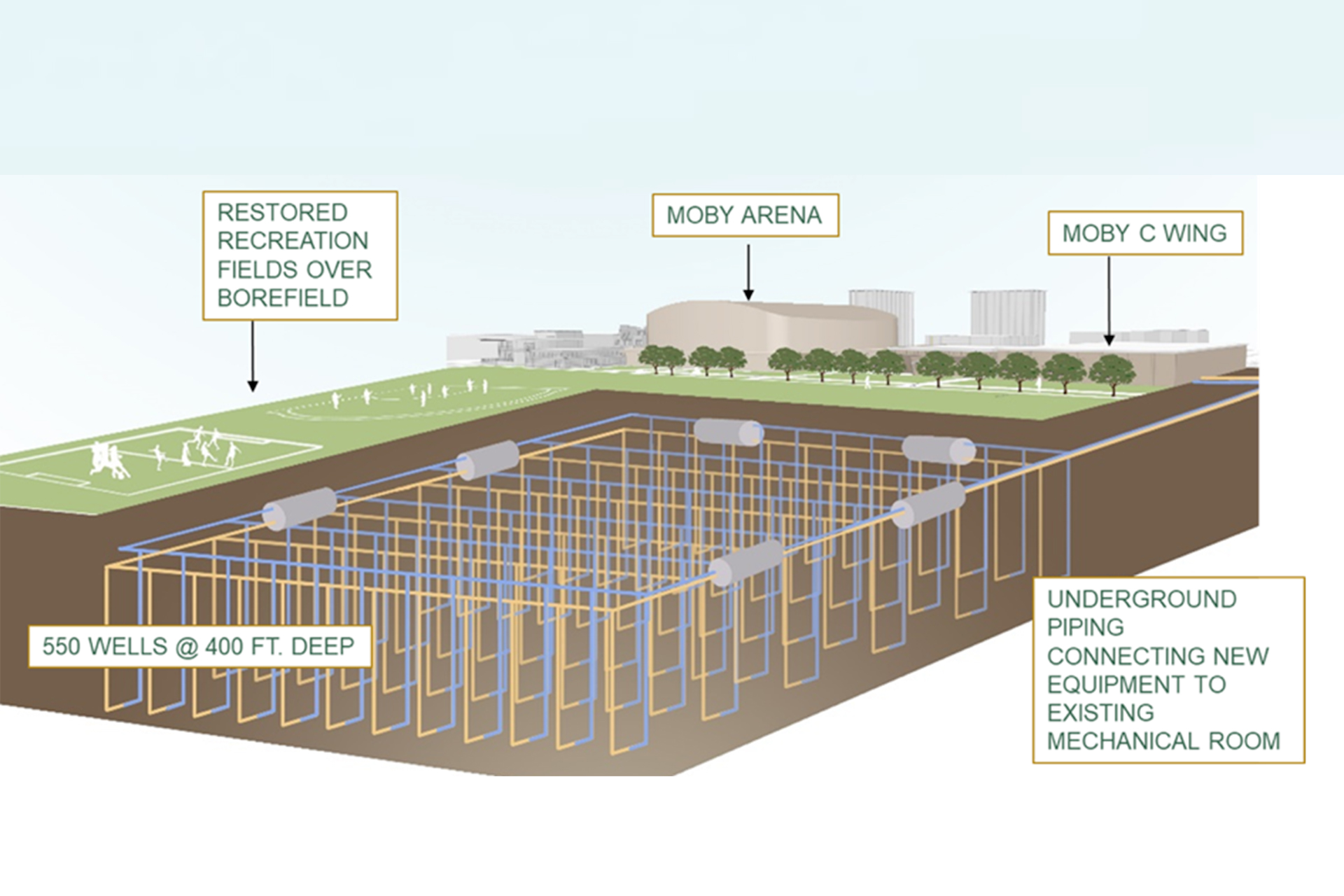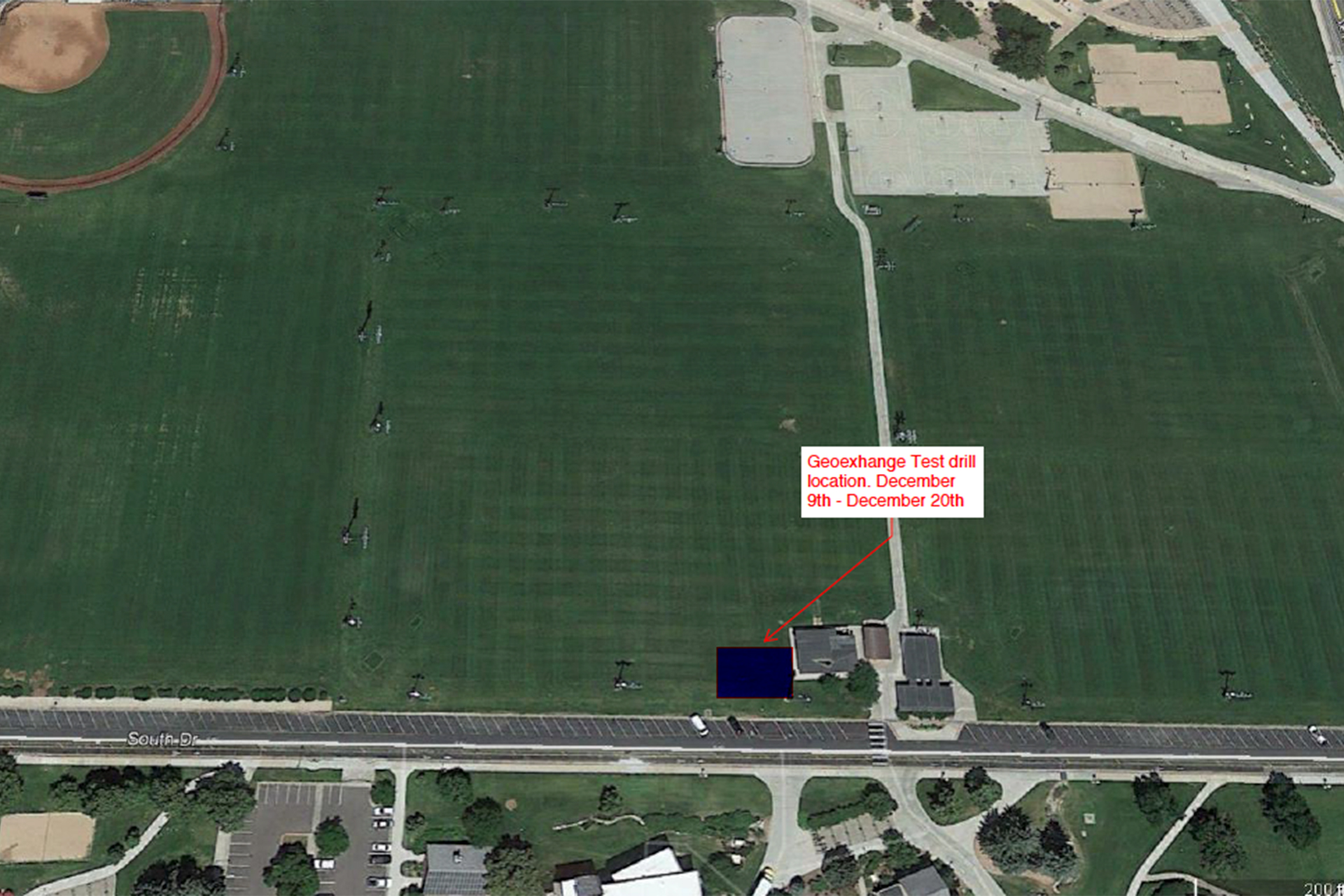
A look at CSU’s GeoX project, which will employ geothermal energy to reduce energy consumption and costs.
Update, Dec. 10: Due to a scheduling conflict with the drilling company, the test bore drilling will not begin until Dec. 12 and is expected to be completed by Dec. 16.
You may find yourself doing a double take while walking or driving by the intramural fields for the next couple of weeks, starting Dec. 9. Yes, that is a drilling rig. No, Colorado State University is not fracking, nor is Hollywood filming for a remake of the Beverly Hillbillies.
Quite the contrary: Instead of searching for natural gas or oil, the drilling is a major step in CSU’s comprehensive renewable energy initiative. The rig will be drilling deep into the Earth – 500 feet or so – in a test bore that is a precursor to the installation of what will be the largest ground-source heating and cooling system in Colorado, and one of the largest in the western United States.
Dubbed GeoX, the project will employ geothermal energy – also called ground source heat pump – for heating and cooling, to reduce energy consumption and costs. GeoX has been in the planning stages at CSU for nearly a decade and will replace the current outdated steam heating system in the 50-year-old Moby Arena, Fum McGraw Center, Anderson Academic Center, Health and Exercise Science, the intramural gym, and the yet-to-be constructed Meridian Village.
Construction in 2020
CSU Facilities Management, in partnership with design/build contractors Adolfson & Peterson Construction, have already started the design and will embark on construction early in 2020 inside Moby. Drilling is set to begin in the intramural fields in May 2020, with temporary impacts to the intramural fields and Hughes Way.
“This test bore will give us a good indication of what we’re dealing with in regard to the conductivity of the ground and drilling conditions,” said Carol Dollard, energy engineer with Facilities Management and co-chair of the CSU President’s Sustainability Commission. “Once completed, this system will not only remove a large section of our main campus from the outdated and more carbon-intensive steam heating and chilled-water cooling systems, but this project also aligns well with the University and city of Fort Collins’ commitment to using 100% renewable electricity by 2030.”
The extensive $20 million project will entail drilling 500 to 850 boreholes, each approximately six inches in diameter and 500 to 550 feet deep, in several intramural fields. The holes will be bored with large machinery that resemble natural gas and oil drilling equipment.
Tony Flores, CSU Facilities Design and Construction project manager, said once the drilling is completed and the intramural fields restored to perfect condition, what lies underneath the feet of recreating students will be nearly invisible.
“It will be a comprehensive system of renewable energy production using the Earth as the source,” he said. “It will be saving money for the University and saving the planet’s resources.”

The location of the GeoX project on CSU’s intramural fields.
About geothermal energy
The temperature in the earth remains fairly constant at all times of the year – approximately 50 degrees Fahrenheit below six feet – even when air temperatures fluctuate between seasons and times of day. Geothermal energy systems take advantage of the constant temperature by circulating water through a field of pipes set into the ground. Once the ground cools or heats the circulating water, it takes little extra electrical energy to bring it to the desired temperature for a comfortable building. The conditioned water can be used in heating and cooling systems in the building’s HVAC climate control systems.
Professional Development Institute
Carol Dollard is hosting a PDI on Jan. 13 on “Moby GeoX – What is this and what are they doing to our IM field” at 9 a.m. in the Lory Student Center.
Get more information at tilt.colostate.edu/proDev/pdi/program.